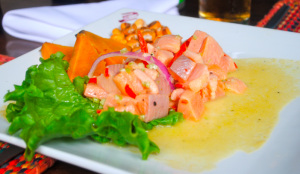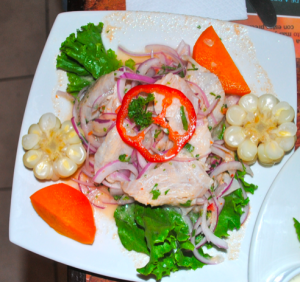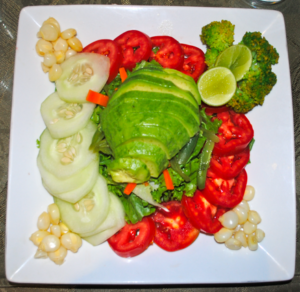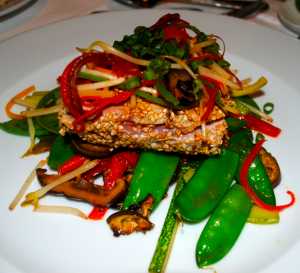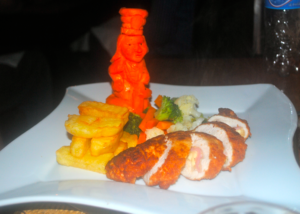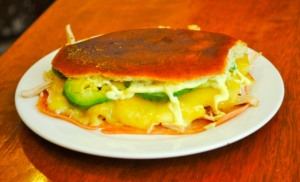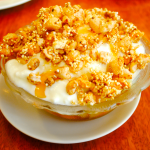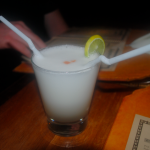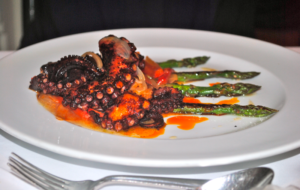There is no better way to get to know a place, a culture, or a people than to eat their food. Every country and culture is defined by a characteristic gastronomy that has been their fare since the dawn of time, literally passed down from parent to child for generations.
The Greeks have their mousaka, fish, fried feta and haloumi cheeses, spanakopita, and stuffed grape leaves. The Italians have their penne, pizza, antipasto, and gelato. The French have their crepes, escargot, frogs’ legs, and fondue. Americans have their hot dogs, hamburgers, McDonald’s, and Starbucks.
Peru’s cuisine is equally as distinctive. The internationally-famous dish is ceviche – or cebiche, depending on where you are, which is a fish dish that could fool you into thinking it was served completely raw because of its rather slimy, shiny appearance. However, this dish is technically cooked, and in fact, the method through which it is cooked is what makes it as unique and as delectable as it is.
Ceviche is any fish (mainly corvina (sea bass), trout, and shell fishes) marinated for a few hours in a mixture that typically consists of lime or lemon juice, salt, chili pepper, and sometimes a bit of olive oil. The acidity from the lime or lemon juice alters the proteins in the fish, making it a bit more solid and rubbery than raw fish. Since the proteins are altered and the texture more chewy, the fish is technically “cooked”; however, one should note that the acid mixture does not “cook away” any bacteria that might have been present on the fish, and that therefore, the freshest fish possible should be used to avoid any potential health risks. Because it’s a lighter, crisper dish, ceviche is usually served at brunch or lunch, and it usually comes with complimentary sides that include sweet potato, corn, avocado, and tons of freshly chopped red onion. Be sure not to skip out on this truly scrumptious Peruvian dish.
Speaking of corn and avocado, Peruvians are incredibly generous with theirs. Coming from the US where avocado runs you a pretty penny, it is abundant down south and therefore highly affordable throughout the entire continent of South America. Every salad I ate – (the famous Ensalata Mixta, which consisted of tomatoes, cucumbers, onions, and green beans, was my favorite) – always came with at least half but usually a whole avocado, sliced neatly and sometimes even presented in an artistic ribbon-like fashion. The salads also always included corn, as did many of the entrées; but the corn in Peru isn’t like what you’d get in the US. Although you can find the classic American-style cob in Peru, you’re more likely to find the kind with enormous kernels on your plate – and I mean enormous. When I spotted my first corn on the cob – at the McDonald’s at the major airport in Lima – I nearly fell out of my chair. Enormous!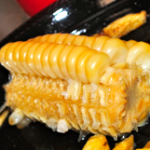
Peruvians also love their soups. Perhaps I was a bit over-exposed to this particular dish by virtue of the fact that I hiked Machu Picchu and was served whatever was easiest to cook for four days straight; however, Peruvians do enjoy a good bowl of soup. There are many different kinds including the popular chicken soup, “diet” chicken soup (just the broth), corn soup (served with egg cooked into it), cream of asparagus soup, quinoa soup, and more, each tasty but many quite heavy to stomach. The soup is commonly served as an appetizer, which for a foreigner like me was a bit much – I was often too full to finish my entrée.
As for the entrée, Peruvian menus are stocked with many different types of fish (Peru accounts for about 10% of the world’s fish supply) but also lots of meat and chicken plates. Chicken Cordon Bleu is quite popular, as is beef – fried or grilled and served with rice or potatoes. You can be sure to encounter rice quite often, especially if you’re eating any meals on a long bus ride or flight. On my overnight bus ride, I was served a vegetarian omelet-style offering with a side of rice, and my boyfriend was served chicken pieces with rice. (Both plates were actually decent-tasting.)
Another popular meal is the sandwich. I had one of the best sandwiches of my life in Cusco, which is where you’ll likely find yourself if you plan to tackle Machu Picchu. The café was called Ayillu and it was in the center of the city, and while it once served only coffee and tea drinks, it now serves sandwiches and baked goods. The sandwich offerings included many chicken, cheese, and veggie combinations, and there were also breakfast offerings such as egg, cheese, egg and cheese, veggies and cheese, and bacon combos. Another item on the breakfast menu was “Yogur Especial”, which was plain yogurt topped with tons of tiny-cut pieces of mango, banana, apple, papaya, and flaxseed, and drizzled with a generous amount of honey. It was fresh, healthy and, above all, heavenly.
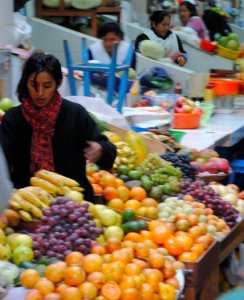 While on the topic of fruit, it was pretty tasty (and if you’re counting avocado as fruit, then it was unbeatable). There are tons of local markets with fresh fruits much like any corner store you might see in New York City; the only issue is that depending on where you are, it might not be trustworthy. Our tour guide at Machu Picchu warned us against eating fruit from some of the more remote towns and villages in the Andes areas and even from some of the larger cities like Cusco itself.
While on the topic of fruit, it was pretty tasty (and if you’re counting avocado as fruit, then it was unbeatable). There are tons of local markets with fresh fruits much like any corner store you might see in New York City; the only issue is that depending on where you are, it might not be trustworthy. Our tour guide at Machu Picchu warned us against eating fruit from some of the more remote towns and villages in the Andes areas and even from some of the larger cities like Cusco itself.
A huge contributing factor to the sketchiness of the produce is the water. Cusco has one of the worst water purification systems in the country, and it’s a city of almost half a million people… Just imagine the tap in a place like Nasca, (a desert city of no more than 60,000, including the suburbs) or Calca (a village located in the middle of the Andes Mountains with a population of about 10,000… and that’s one of the larger Andean communities). In short, don’t drink the water. Always buy sealed bottled water. Yes, it can get costly, but allotting the extra cash will be worth it. (Some people even brush their teeth with bottled water. I did not do this, although I did get a stomach bug at one point on my trip…)
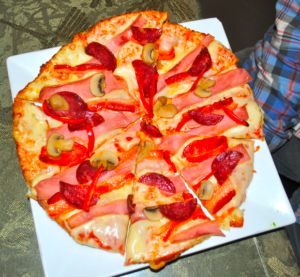 One last thing: pizza! We kept seeing pizza joints in each city, and when we asked our tour guide why, he said that Peru “wants to keep its tourists happy”. Makes total sense considering the fact that tourism makes up a lot of Peru’s economy. And while our tour guide warned us against some of the less mainstream pizza places attributing his caution to poor sanitation, the pies we tried at the safer-seeming places were surprisingly delicious.
One last thing: pizza! We kept seeing pizza joints in each city, and when we asked our tour guide why, he said that Peru “wants to keep its tourists happy”. Makes total sense considering the fact that tourism makes up a lot of Peru’s economy. And while our tour guide warned us against some of the less mainstream pizza places attributing his caution to poor sanitation, the pies we tried at the safer-seeming places were surprisingly delicious.
And finally… the drinks. The “national drink” of Pisco Sour, which translates to something along the lines of “Sour Bird”, is a concoction of a pisco liquor base, egg whites, syrup or sugar, ice, lime/lemon juice, and angostura bitters, is reminiscent of a margarita and is quite tasty. It’s a must if you visit Peru, even if just once to be able to say you tried it. As for wines, there are tons of Peruvian options but also many varieties from around the world. The local beers are Cuzqueña, Pilsen Callao, and Cristal. More information on the beers can be found here.
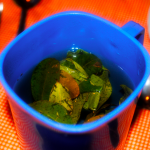 As for tea and coffee… Tea is widely consumed, especially the famous coca leaves, which help soothe altitude sickness when chewed or consumed in hot water but will not get you any sort of high as rumored worldwide. It’s a cultural thing, but worth the try (and trust me, if you experience altitude sickness, you’ll try anything to make it go away). As for coffee, Peru is the 10th largest coffee exporter in the world and has some of the best and fair-trade beans to be found. A local Peruvian insisted that other South Americans tend to import Peru’s beans and pass them off as their own (although that might just be a cultural myth!).
As for tea and coffee… Tea is widely consumed, especially the famous coca leaves, which help soothe altitude sickness when chewed or consumed in hot water but will not get you any sort of high as rumored worldwide. It’s a cultural thing, but worth the try (and trust me, if you experience altitude sickness, you’ll try anything to make it go away). As for coffee, Peru is the 10th largest coffee exporter in the world and has some of the best and fair-trade beans to be found. A local Peruvian insisted that other South Americans tend to import Peru’s beans and pass them off as their own (although that might just be a cultural myth!).
If you find yourself in the Peru, the cuisine will not disappoint. Since returning from my Peruvian adventure, I have actively sought out local Peruvian restaurants in search of the best American versions of the dish. And while I don’t miss the coca tea or the lack of American-style iced coffee drinks, I certainly miss the abundance of avocados, the freshness of the sea bass, and the novelty of the enormous corn kernels that not only taste great but also make you smile.

